Houndstongue identification and control
About this weed
Houndstongue is a regulated Class B noxious weed in King County. This means control is required in King County under the state noxious weed law.
Houndstongue is also on the Washington quarantine list and it is illegal to buy, sell, or offer it for sale in the state.
Houndstongue is known as Cynoglossum officinale, and it is in the borage/forget-me-not family.
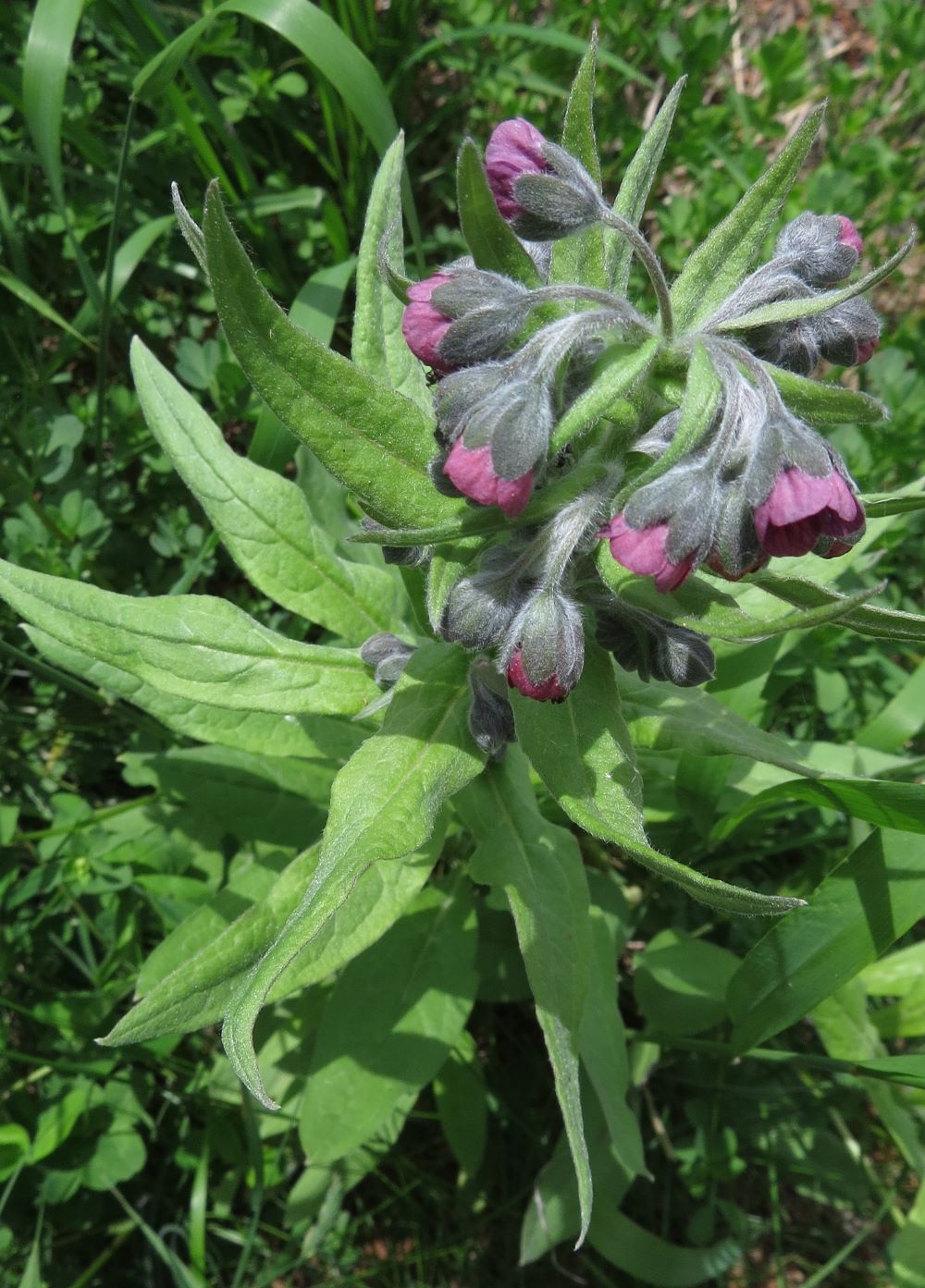
Why it's a problem
- Invades pastures and rangelands
- Toxic to cattle, horses, goats, and other animals
- Dead plants are still poisonous, and often eaten in hay
- Plants can cause skin rashes (dermatitis) in humans
- Seeds can stick to people, animals, and vehicles to spread
Plant description
Houndstongue is a biennial, which means it lives for two years and looks different each year. First year plants are small 6” tall rosettes (a circular cluster of leaves at ground level).
Second year plants have stems that grow 1-4 feet tall. This is the year the plant will flower and make seed.
Roots are taproots which are thick, woody, black, and branching. All parts are covered with hairs.
Leaves are rough and hairy. They are 4-12 inches long and narrow. They are said to look like a dog/hound’s tongue, where it gets its name. Leaves are smaller higher up the stem.
Stems are upright, course, and hairy. They branch at the ends.
Flowers are in clusters at the ends of stems. They are red/purple-ish and have 5 lobes.
Seeds form 4 ‘nutlets’ with one seed in each. The nutlets are covered with spikey hooks, which attach to animals and people. When present, they reduce the value of wool.
Houndstongue habitat is mainly roadsides, meadows, and disturbed areas. It likes the sun as well as wet grasslands. It is native to Eurasia and was introduced to the United States in 1893 accidentally through seeds. Houndstongue mainly spreads by seed. It can produce 300-2000 per plant and can live on/in the soil for 2-3 years.
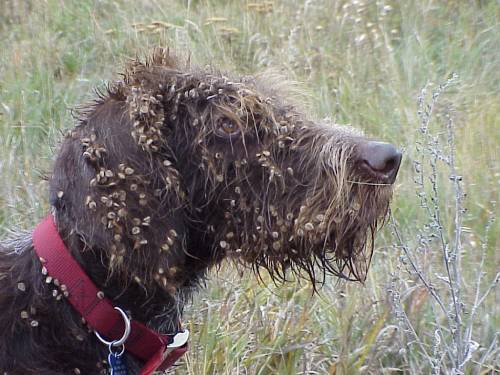
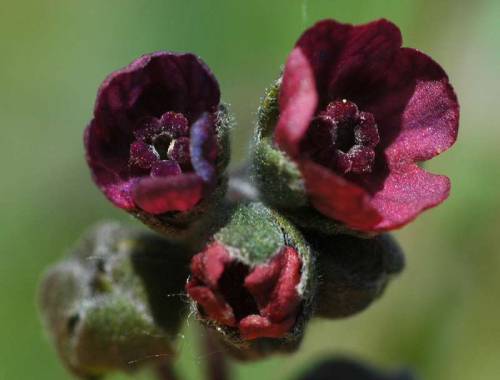
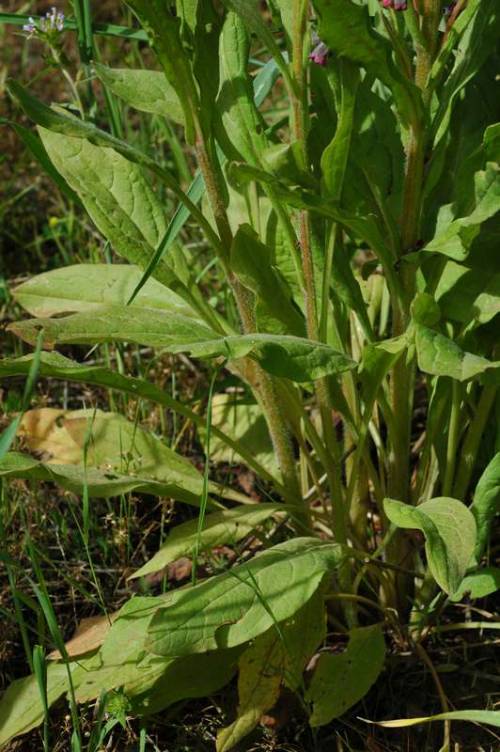
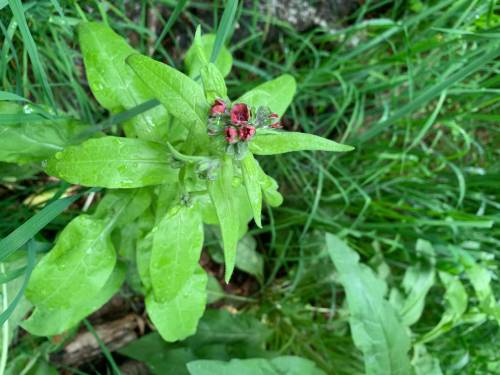
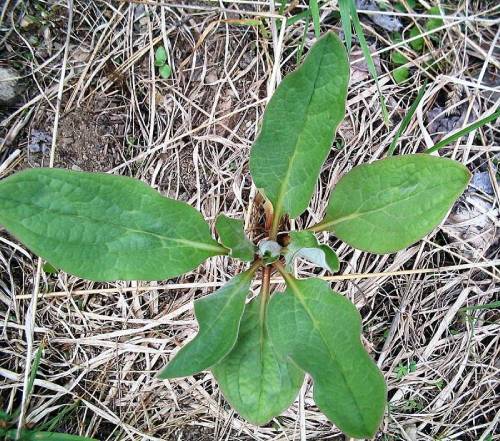
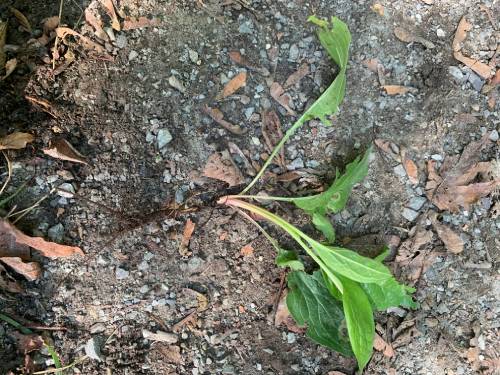
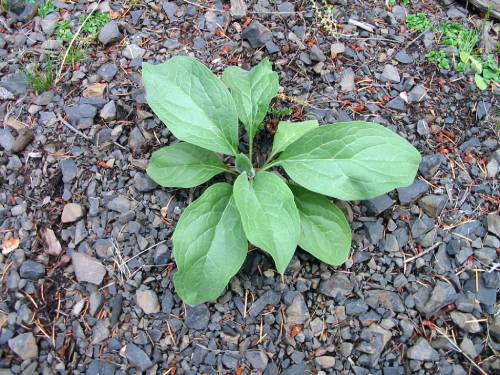
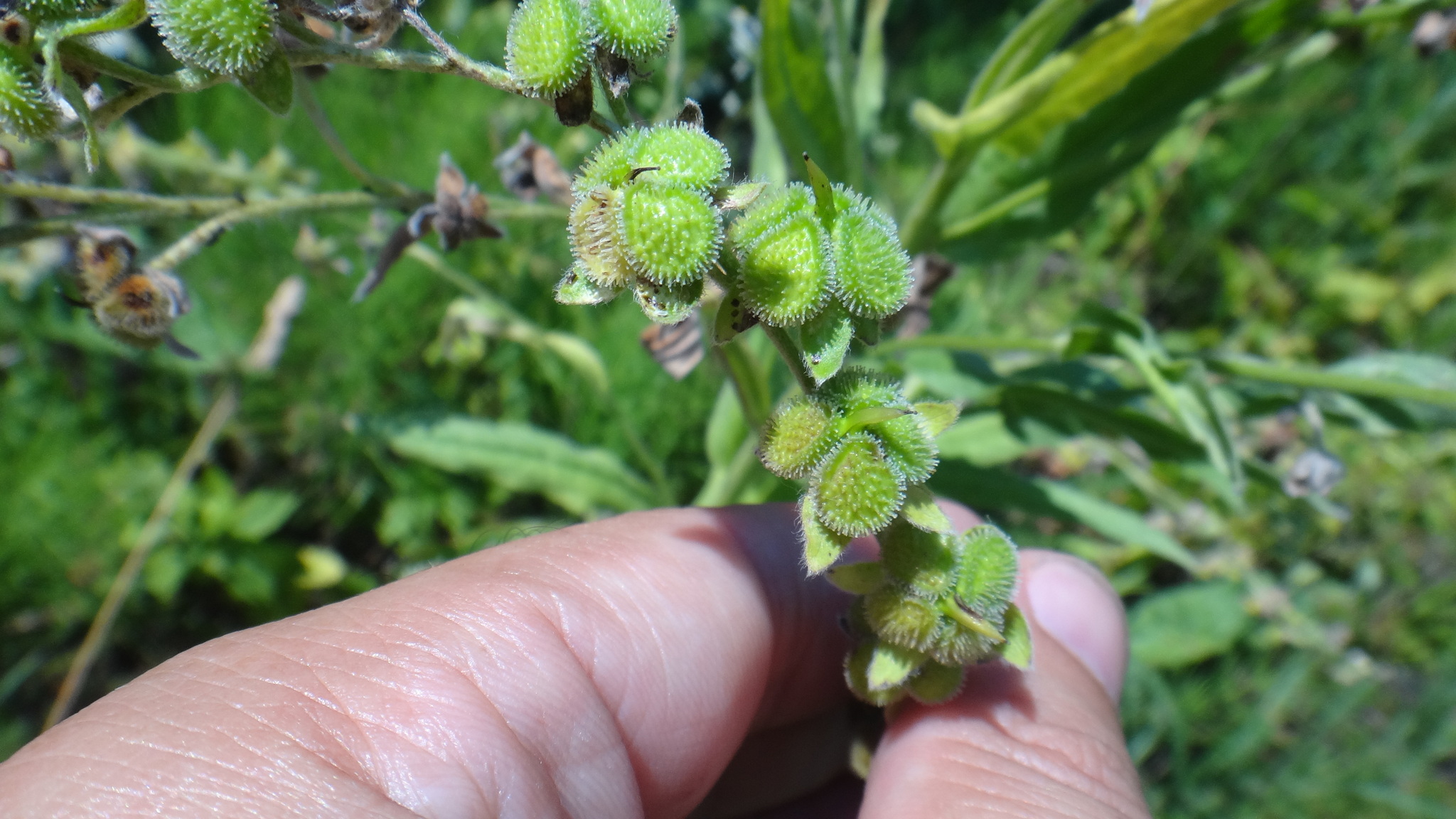
What to do if you find it
Property owners are required to control houndstongue on lands that they manage. Please notify us if you see houndstongue growing in King County. Our program staff can provide the property owner or appropriate public agency with site-specific advice on how best to remove it. We map all known locations of regulated noxious weeds such as houndstongue in order to help us and others locate new infestations in time to control them.
Control methods
We recommend using a combination of methods to control noxious weeds. In areas with few weeds, it is important to act quickly before they become harder to control. Make a long-term plan as it often takes several years to get rid of most weeds. Start in the least infested areas first and then move into more heavily infested areas.
Manual & Mechanical Control
- Pull/dig up plants, remove as much of the root as you can
- Remove plants before seeds appear
- Plants should be removed from site, as dried plants are still toxic
- Flowering plants (before seeds appear!) can be mowed and properly disposed to reduce seed production. Watch and repeat as needed
- Pulling young plants in autumn and early spring provides best results
Cultural control
- Planting native and desired plants in area will help reduce houndstongue populations
- Do not allow livestock to graze due to toxicity
Chemical control
Stay safe when using herbicide:
- Always read the label before use.
- Wear a long-sleeved shirt, long pants, shoes, and eye protection.
- Follow state and local regulations.
For houndstongue herbicide may be more cost effective for larger infestations comparted to other methods. It's best to treat the plant before it forms flowers or seeds. Annual treatments for new seedlings is typical.
For more information, please refer to the PNW Weed Management Handbookfor the most up to date and specific method for chemical control of houndstongue.
Disposal instructions
If livestock is present, it is not recommended to compost on site. You should bag and dispose of all plant parts either in the garbage (flowers/seeds present) or compost (no flowers or seeds). Do not stockpile flowering plants on a burn pile- they will still set seed.
If livestock is not present, you can bag the flower or seed heads. The remainder of the plant can be pulled or dug up and left to dry out and die.
Noxious Weed Disposal - Washington State Noxious Weed Control Board

 Translate
Translate